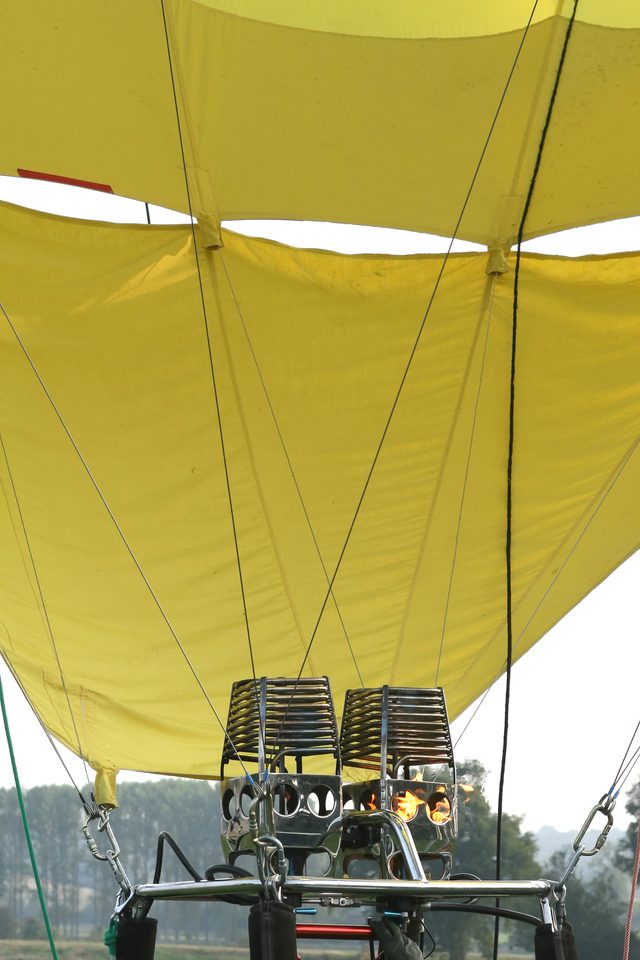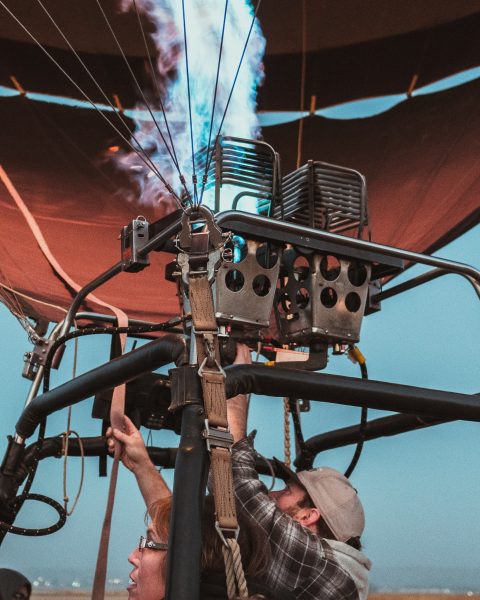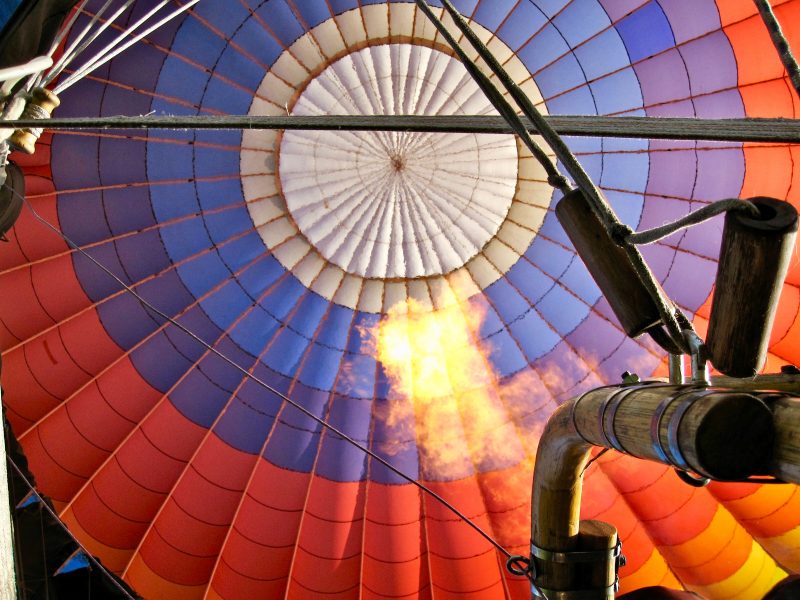The Driving Force Of Hotair Balloons
The engine and the motive force of the balloon is the burner. It produces and propels the heated air into the envelope. The pilot uses the hot air to ascend and descend as well as to control the vessel’s motion once aloft. And the pilot light assures access to heat whenever necessary. Balloon enthusiasts and hobbyists look for many things when purchasing a burner for their hotair balloons. Apart from qualities such as the capability to burn quietly and to operate over a broad range of fuel pressures, the most desirable features of the burner that a balloon operator looks for is the sheer power output and its reliability. But they also have many other options that cater to their requirements and suit their needs. Thanks to cutting-edge machinery, it is even possible to tailor-make them.
Types of burners
There are different types of burner. A wide variety of them differs mainly in the number of heaters included. They are single, double, triple and quad configuration, depending on the balloon size. Smaller flights only require a single system. The dual system is the most popular one. It is made up of 2 sections. The triple and quad systems use 3 or 4 burners that are linked together. They provide a much stronger and more powerful flame. Commercial flights use more robust systems and come equipped with a highly maneuverable gimbal block system that the pilot adjusts to their personal requirements. Burners also come in some power and style design options, complemented by a range of aviation quality frames intended to suit all types and sizes of the basket.
Propane to heat
Balloons use propane to heat the air stored in cylinders kept in the balloon basket where the passengers and pilot stand. The propane is in stainless-steel or aluminum tanks. Although stainless steel tanks are more expensive than aluminum, they are lighter allowing more fuel with less weight. In this energy-scarce world, propane is the fuel mostly used to operate an hotair balloon. The fuel is also called liquefied petroleum gas and has an advantage of being inexpensive and readily available. Moreover, propane in gas form makes for a powerful flame and efficient fuel consumption. Propane is odorless, so as a safety measure an ingredient called mercaptan is added to it. Mercaptan has a sweetish, strong scent, which makes its leaks readily detectable.
Workings of burner
To draw fuel, the pilot pulls the trigger on the blast valve. This trigger is also used to adjust the flow rate from the tank. The propane is carried under pressure from the reservoir in the basket through a hose to the burner when the pilot starts it. A pressure gauge tells what this pressure is. The fuel goes through coils which vaporize the liquid gas. As the flame ignited by the pilot light burns, it heats the metal in the surrounding tubing which in turn heats the propane flowing through it and this process changes the propane from liquid to gas. It sends a seven-foot flame into the envelope. Intermittent blasts during flight help to maintain a standard temperature and standard altitude for that flight.
Alternative heating method
There is another method by which the pilot can add heat to the envelope. It is by using the metering valve or the cruise which allows for a standard temperature by monitoring the exact flow of propane. The metering valve enables the pilot to maintain a straight flight without having to use the blast pipe that often. It would be like flying an hotair balloon on autopilot.
Notable burner companies
The Lindstrand JetStream Burner has a single Monobloc body that incorporates all burner controls and valves. All fluid operations and pressure occur within this body. It also stabilizes temperature as the propane gas flows through the body before finally exiting through the jets. Moreover, the valves contain various seals providing the highest reliability on every flight. The Safire Burner was launched at Bristol International Balloon Fiesta in 2013 and is already working for some of the leading balloon operator’s fleets. Since its introduction, it has been reputed to offer the highest reliability and quality as well as a substantial reduction in overall maintenance. The innovative features of Safire Burner make it ideal for tourist destination countries such as Kenya.
Advancement through technology
Since its inception in the 18th century, there have been significant advances in the heater system. Hence, the system has been refined over the years and yielded superior designs with a higher power, fuller redundancy, lower noise and a feature-rich design. For example, the advancement in technology has made it possible to create the burner to an individual’s specific requirements. These days people even make an ultra-quiet flame system or make them from their preferred type of material. It also burns cleanly using advanced technology with the minimum amount of condensation and radiant heat. Apart from that, a sophisticated one enables easy assembly and maintenance without the use of tools all at a reduced cost.

With the advancement of artificial intelligence and virtual reality, there might be a time when the balloon can fly remotely
Future of burners
The pilot controls an hotair balloon using the temperature inside the envelope. And the burner is the tool that he or she uses to control the temperature. That is why the burner is the engine of the balloon. An increase in the inside temperature sends the flight higher and higher. And a decrease in the temperature helps it land. In between ascend and descend, the pilot horizontally maneuvers it by catching the air drift at different altitudes. More sophisticated burners are available for bigger balloons. Burners are also custom-built for adventure sports athletes who might want to break records. As the industry progresses, the world may have many other types of them. And who knows, with the advancement of artificial intelligence and virtual reality, there might be a time when the balloon can fly even remotely
5 Frequently Asked Questions About Hot-Air Balloon Burner
To book a balloon safari, please fill out the following form or simply email us on safaris@safari-center.com







